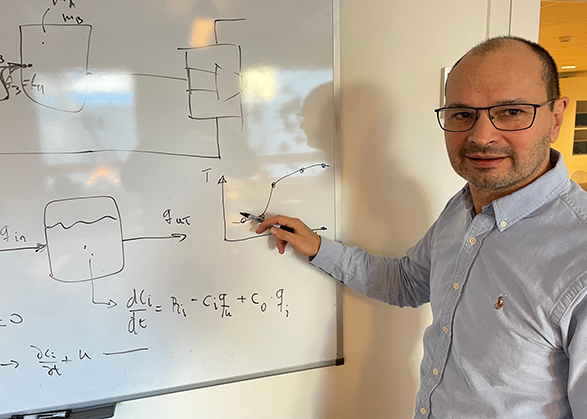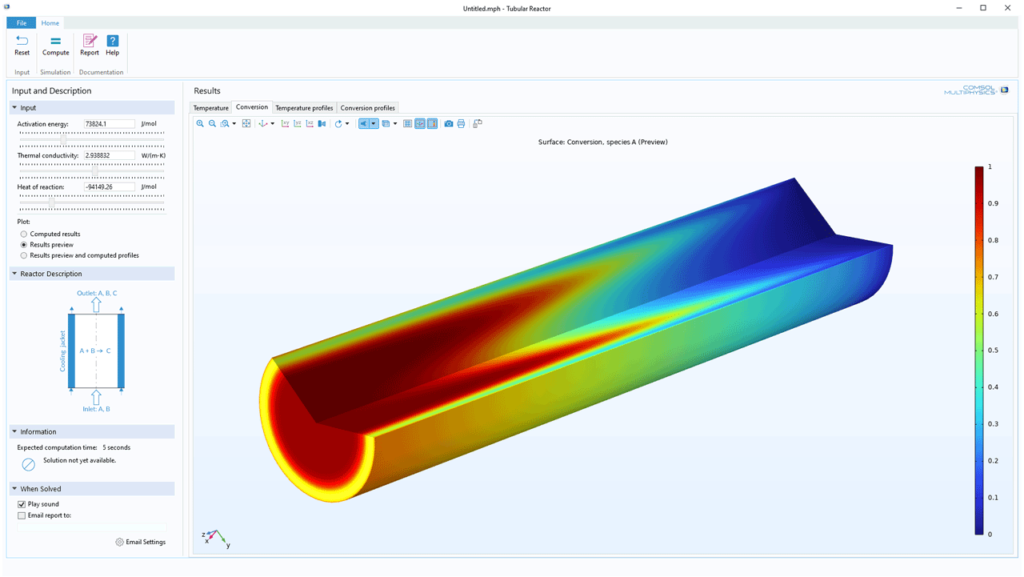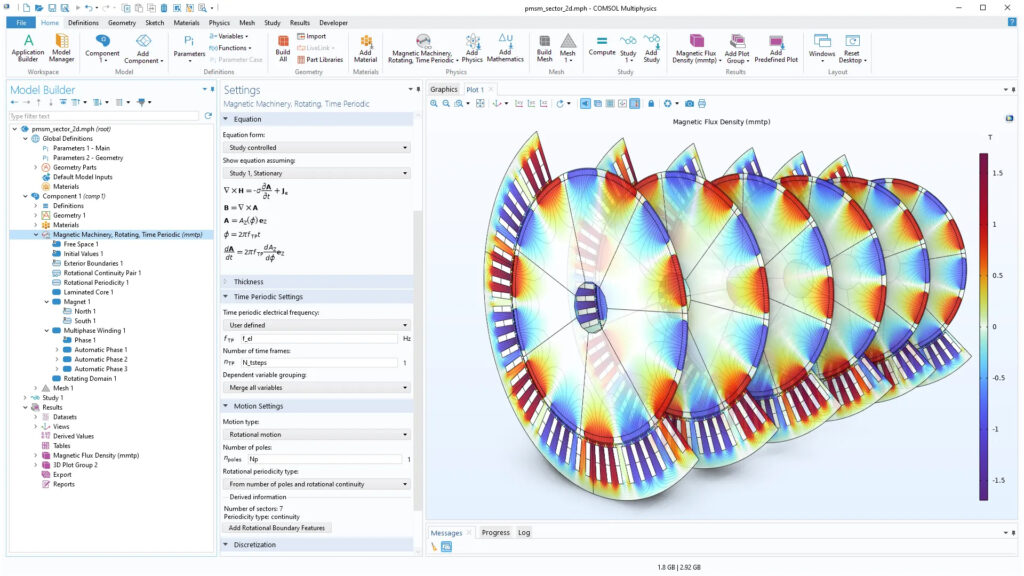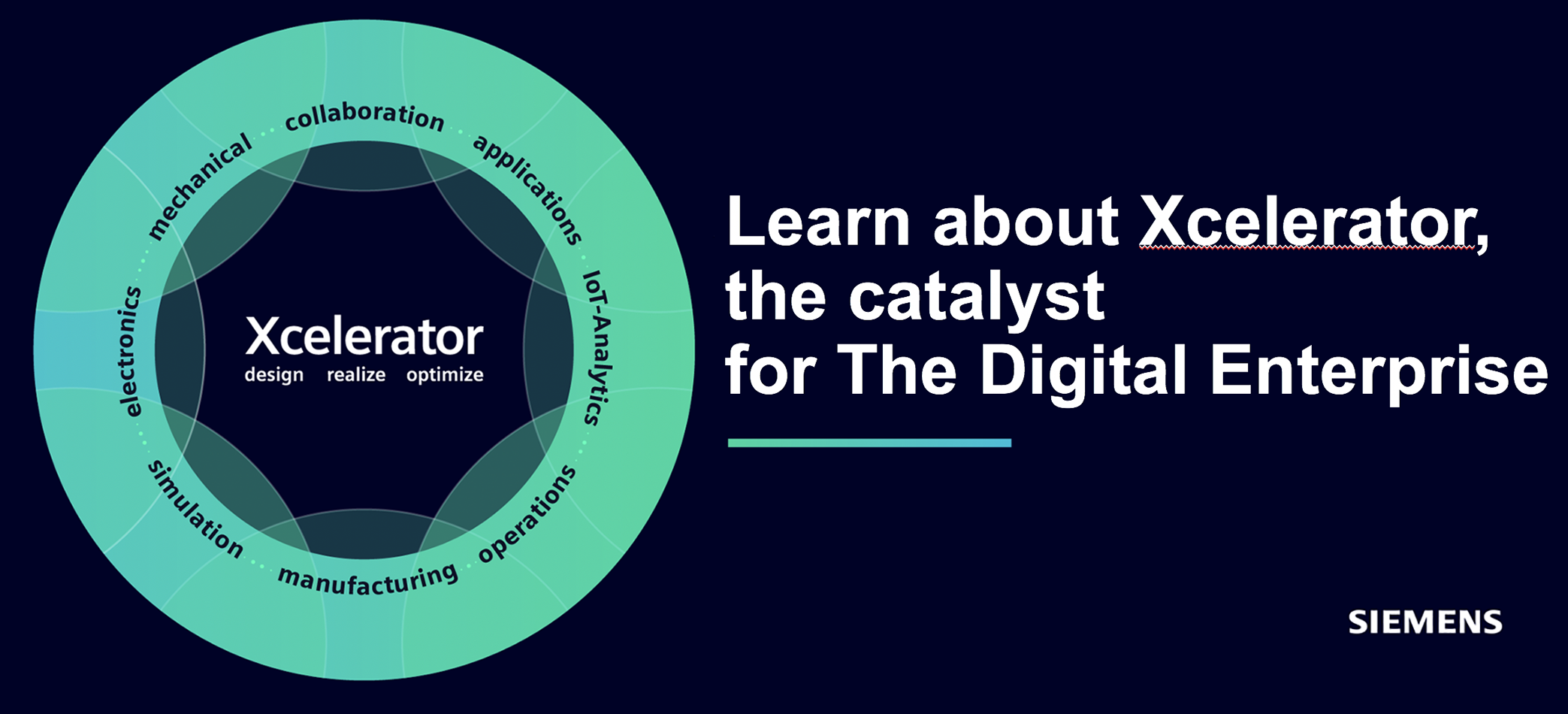COMSOL has largely been at the forefront with solutions that contribute to democratizing the management and dissemination of decision-making materials, with modules such as Application Builder and Model Manager. The apps for sharing simulation results has gained increased use, says COMSOL’s Ed Fontes.
“Indeeed, it has. We met some large customers at the COMSOL Conference in Munich in November. Some of these customers use the Application Builder and COMSOL Compiler to generate standalone simulation apps–apps that do not require a COMSOL license to run. I was surprised about the number of standalone apps that they create and the number of copies that they distribute within their organizations. We cannot monitor the number of standalone apps that our users create with COMSOL Compiler so meeting these customers was essential to get this feedback and information. It is clear that the Application Builder and the COMSOL Compiler are of great help to these customers.”

“The Model Manager is a relatively new product. Large German customers seems to be early adopters of this product. In Munich, we received a lot of positive feedback regarding Model Manager but also a list of requests for more functionality from some of our large German customers.”
Where is Multiphysics heading?
This said, where is simulation of multiphysics phenomena headed, PLM&ERP News’ Verdi Ogewell asked Fontes.
He mainly pointed out that from having primarily been a tool for understanding, innovating and optimizing during the development phase of products and processes, multiphysics simulations, with the introduction of simulation apps, have also started to be used to monitor operations:
“Modeling and simulation (M&S) has trickled down from large companies’ corporate R&D departments, national labs, and universities, down to smaller companies’ design departments. Multiphysics simulations are probably used by most high-tech companies, large and small,” Fontes says.
But during the later years, also the use of M&S has changed. In the past, it has been implemented in the exploratory and development phases for studying, designing, and optimizing devices and processes.
“With simulation apps, simulations are also used to study a specific instance of a device or a process during operation. One example is the HETT22 simulation app mentioned above. It is used to simulate the curing of concrete structures at a specific location at a specific time using weather data and weather forecast data to ensure that the structural integrity of that specific concrete structure meets the requirements. This is what we could call a digital twin of the simulated concrete structure. But many of our customers that use simulation apps in this way may not be aware of the term digital twin, since this is relatively new,” he says.
Why this development?
“That is probably explained by the fact that simulation apps do not require a large investment in time. The simulation app developer (a modeling and simulation specialist) can tailor the user interface of the app for a specific purpose for a set of inputs yielding a set of desired results. The user of the simulation app does not need to be an expert in M&S although the app itself may be based on advanced multiphysics modeling. This makes it easier and quicker for a larger community of engineers and scientist to benefit from M&S and also for a wider range of use. It simply makes M&S profitable for a wider range of use,” explains COMSOL’s director of development.

How does AI impact?
“AI is such a broad term, so that it is not easy to answer this question in a general context. I would like to be more specific in order to explain what we do. For example, we are developing functionality for surrogate models. A high-fidelity multiphysics model is the best way of making predictions about a device or a process, although the model equations may require a substantial amount of computing power. Surrogate models are based on advanced function approximations for making predictions based on data, data that can be obtained from multiphysics models. What we do is to use advanced functions to approximate the results from multiphysics simulations. The resulting advanced function approximation is the surrogate model, which can be very accurate if the appropriate parameter interval has been used to create it.”
The benefit is that the surrogate model is able to compute the results almost instantaneously. Surrogate models do not require large computing power and they often take very little space. A surrogate model can be compact and portable (installed on different platforms).
“We have implemented deep neural networks (DNN), Gaussian processes, and other advanced function approximations to create surrogate model. The adaption of these functions to the data from multiphysics simulations is done in a process called ‘training’. The whole process is usually referred to as “machine learning”, which is a field of study within AI.
We could say that we have ‘AI-based machine learning’. However, this would not say much, it is fuzzy, ambiguous, and inaccurate. It does not explain what we do to our users nor to our potential users. Telling our users that we now (in v6.2) offer functionality to create data-driven surrogate models based on advanced function approximations such as DNN and Gaussian processes is more exact and descriptive,” Ed Fontes continued explaining that, “Some engineers and scientists would know exactly what we mean while some may have to look it up. In either case, the statement is accurate enough to describe the functionality.”
He adds that, “maybe ‘AI-based machine learning’ would work well with the press and with investors. But for you in the press, we need to explain what we mean anyway and we do not have investors. In addition, it would have felt cynical to ride on the ‘AI’ wave by using this term when there is more exact, specific, and useful terminology.”
Another area for “AI” is the use of bots. Fontes means that trained chat bots could be used to guide users through the modeling process. We could also consider bots for helping users to create short scripts and to analyze code.
“This is already applied in our field. Even open bots on the web can be used today to get a ‘not completely worthless’ description about how a model or an app can be created in COMSOL Multiphysics.”

Surrogate models increase computational speed
You highlighted in an earlier PLM&ERP News interview that you can now increase the computational speed of your simulation apps using data-driven surrogate models, which leads to a more interactive user experience and promotes wider use of simulations within an organization. Additionally, the new surrogate model framework makes it possible to build new types of standalone simulation apps and efficient digital twins. What’s the general definition here?
“A surrogate model is a trained advanced function approximation that can mimmic a multiphysics model. The training process requires a substantial amount of computing power, since the data is obtained from solving multiphysics model equations. If the surrogate model is trained properly, i.e. if the training data spans the operating space, then the surrogate model can deliver accurate results for a much large number of input data point than it was trained for within the training data interval. The benefit is that the results from the surrogate model are delivered instantaneously and for any input data within the training interval,” explains Ed Fontes.
”Training” of the network
Performance is a key to faster time to market for newly developed products. Not least in electromagnetism, there are clear elements of this trend in the new version. After all, electrification is one of the important trends of the time, and in the press material you point to a new time-periodic study for non-linear problems in electromagnetism – mainly for electric motors and transformers – which significantly reduces calculation time. You talk about ”hyper-fast simulations” as one of the goals.
”Yes, in general our performance projects are among the larger and long-term development projects. These projects have run for a decade now and they will continue as long as I can foresee. This means that each new COMSOL Multiphysics version is substantially faster than its predecessor. But we will not be satisfied until we have hyper-fast solutions in all fields that are relevant to us and our users.”
“In order to model harmonic processes in electromagnetism (for example AC), a mathematical method is used that transfers the model from the time domain to the frequency domain (Fourier transform). This transform is very powerful as long as the process is linear, for example, a change in voltage amplitude should create a proportional change in the current’s amplitude. The method implies that the problem can be solved one for one frequency instead of many times for small time steps until reaching a harmonic steady-state.”
The only cost for modeling in the frequency domain is that the variables (the electromagnetic fields) are more expensive to describe since they have to describe both frequency and phase angle, he added and described this is a standard method that have been used for Maxwell’s equations for electromagnetism since the end of the 19th century.
“When the process becomes nonlinear, for example if a change in current is no longer proportional to the voltage, then this method no longer transfers the whole problem to the frequency domain. Then we have to solve the problem in the time domain, potentially for a very large number of time steps. In version 6.2 we introduce a method that makes it possible to go fast-forward until harmonic steady-state. Then we only need to solve the problem for one harmonic cycle, i.e. we have to take time steps but only for one cycle. This save an immense amount of solution time without any losses in accuracy.”

”Extremely user-friendly for its industry”
The latest version of COMSOL Multiphysics is “extremely user-friendly for its industry”, Fontes said in an earlier PLM&ERP News interview. The term ”user-friendly” is relative – knowledge of modeling and simulation is still required here, e.g. How will developments in this field look in the future to make multiphysics modeling and simulation accessible to more engineers and researchers?
“I claim, or choose to believe, that our multiphysics modeling tool is superior when it comes to user-friendliness. I base this claim on the dialog that we have with larger customers that use all the CAE-tools available on the market. Most of the other multiphysics modeling tools are a bunch of single-physics tools stitched together but originally developed as separate products. COMSOL Multiphysics is monolithic and has multiphysics and usability for a very wide range of problems in its DNA. Sure, there are very user-friendly tools for specific problems in the market. But for general multiphysics problem definition and solution, our tools are simply the best,” Ed Fontes replied.
And he went on pointing at that despite the fact that COMSOL Multiphysics is “uniquely user friendly”, it still requires some knowledge of modeling and simulation.
“You need to know terminology such as boundary and initial conditions, load and constraints (structural mechanics), to mention a few terms. We can circumvent these hurdles with the Application Builder and simulations apps. The modeling specialist can set up the model and build a user interface tailored for solving a specific problem with the Application Builder. The resulting simulation apps can be used by product and process specialists. The product or process specialist does not have to be bothered with the technicalities of setting up the model. This approach has the advantages that simulations become available for the engineers and scientists that know the product and process best (the product or process specialist) and it also frees up time for the modeling and simulation specialist. A larger number of engineers and scientists can then benefit from multiphysics simulations.

The future looks bright for the Swedish multiphysics developer. When PLM&ERP News interviewed the co-founder, Svante Littmarck, a few years ago, his stated goal was to reach the billion level in terms of revenue within a few years. This has now been exceeded and the aim is set at 2 billion.






